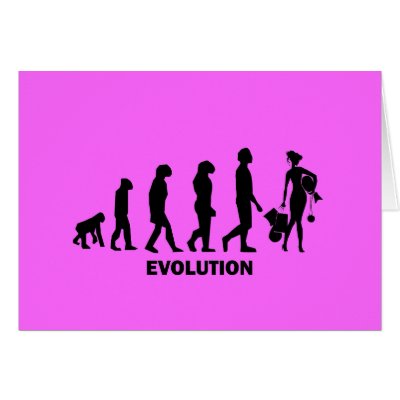Gender Specific Advertising: Why Cavemen and Cavewomen Affect Our Shopping
Do you remember this Heineken advertisement?
It may be funny, but it also illustrates a great point: as consumers, men and women are vastly different and, therefore, the way in which companies cater to each gender must be different as well.
It’s a well documented fact that men and women have different buying patterns and behaviors, which some psychologists theorize have to do with the societal structure of our pre-historic ancestors. Men were generally hunters, so they had one specific target in mind, and moved with efficiency and purpose towards that goal. Women, on the other hand, were gatherers, and thus would look around and compare quality of goods. This simple difference of biology may account for why women are generally the target audience for marketers.

Our ancient behaviors are echoed in present day shopping mannerisms. Men generally know what they want before shopping, and shop alone, not paying much attention to anything else than their goal. As soon as they purchase their item, they leave and don’t bother to look around anymore. On the other hand, women are more likely to look through a greater selection of things, even if they were only planning to buy one item, as well as shop as a social activity. Also, because of their traditional role as caretaker, women are more likely to comparison shop, looking for the best quality goods for their family as they may have once strove to find the tastiest berries or the cleanest water. As quoted in Terry O’Reilly’s Age of Persuasion podcast from CBC, a study by GE Money revealed that women make 301 shopping trips a year, lasting a total of almost 400 hours. This breaks down to an approximate eight years of a woman’s life spent shopping!

Over the past few decades, marketers have clued in to this ‘caveman psychology’, and now know the value of women as a demographic. Women are much more likely to pay attention to brand image and messaging, and, thus, women are the target demographic of most commercials-for example, I’m pretty sure Kenwood wouldn’t run this ad now:

As professor of marketing at Wharton Steven J. Honch has stated, “Women think of shopping in an inter-personal, human fashion and men treat it as more instrumental. It’s a job to get done.” This realization is the basis of female-oriented business strategies, especially in our technological age. For example, online sales are now a huge component of sales techniques, fulfilling a woman’s need for wide selection and easy browsing, as well as the incorporation of social media through sites like Pintrest and Twitter, which satisfies a woman’s desire to make shopping a social activity. As well, marketing is getting more and more targeted, with sites like Facebook offering personalized advertising to your interests, which plays into a woman’s need for personal investment in her shopping experience.
As we move into the future, you have to wonder- will this trend of advertising to women continue, or will marketing and retail strategies shift to be more equal between the genders? It seems that, for now at least, women will continue to be the most sought after demographic for marketers- and rightly so.
References:
http://knowledge.wharton.upenn.edu/article.cfm?articleid=1848
O’Reilly, Terry, auth. “Men Are From Sears, Women Are From Bloomingdales” The Age of Persuasion. CBC Radio, 01/14/12. web. 5 Oct 2012.